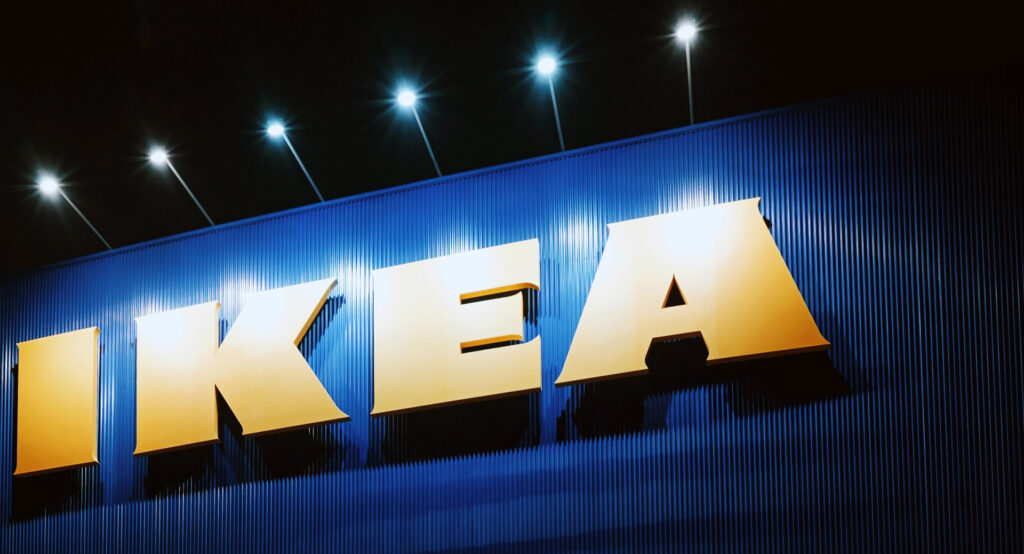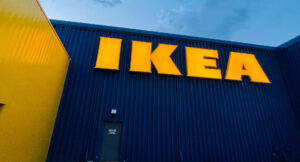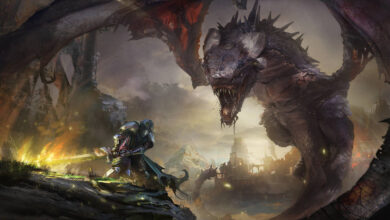From Meatball Sales to Flat-Pack Furniture Design.
From Meatball Sales to Flat-Pack Furniture Design.
IKEA is a global furniture retailer known for its affordable and functional home furnishings. Founded in Sweden in 1943, the company has since grown into a household name, with stores in more than 50 countries around the world.
IKEA’s innovative design, low prices, and quirky marketing campaigns have made it a favourite of millions of customers worldwide.

The name “IKEA” is an acronym that stands for Ingvar Kamprad Elmtaryd Agunnaryd.
1 Ingvar Kamprad is the founder of the company, Elmtaryd is the name of the farm where he grew up, and Agunnaryd is the name of the village near the farm.
The name was created by Kamprad himself in 1943, when he was just 17 years old and started the company as a mail-order business selling pens, wallets, and other small items. As the company grew and began to specialize in furniture, the name “IKEA” became synonymous with affordable and functional home furnishings.
IKEA was founded in 1943 by Ingvar Kamprad, a Swedish entrepreneur who was just 17 years old at the time.
2 Kamprad started the company as a mail-order business selling pens, wallets, and other small items. He named the company “IKEA” after his initials (I.K.) and the first letters of his family’s farm (Elmtaryd) and the nearby village (Agunnaryd) where he grew up.
As the company grew, Kamprad began to focus on furniture design and production, and IKEA soon became known for its affordable and functional home furnishings. Today, IKEA is one of the largest furniture retailers in the world, with stores in over 50 countries and a reputation for innovative design and quirky marketing campaigns.
The first IKEA store opened in Älmhult, Sweden, in 1958.
3 Prior to this, IKEA operated as a mail-order business, selling furniture and home goods through catalogues. However, founder Ingvar Kamprad saw the potential for a physical store where customers could see and touch the furniture before purchasing it.
The first store was a success, and IKEA continued to expand its retail operations, eventually opening stores in other parts of Sweden and then in other countries around the world. Today, IKEA has over 400 stores in more than 50 countries, making it one of the largest furniture retailers in the world.
The company’s flat-pack furniture design was inspired by a malfunctioning table that Ingvar Kamprad disassembled and reassembled for easier transport.
4 Kamprad realized that by taking the table apart and packing it flat, it could be shipped more efficiently and cost-effectively.
This led him to start designing furniture that could be easily assembled and disassembled, and that could be packed flat for shipping. The concept of flat-pack furniture quickly became a hallmark of IKEA’s design philosophy, and is now a key part of the company’s brand identity.
Flat-pack furniture is not only more efficient to transport, but it also allows customers to easily transport furniture home and assemble it themselves, saving them money on delivery and assembly costs.
IKEA is the world’s largest furniture retailer, with more than 400 stores in over 50 countries.
5 The company’s retail operations are supported by a global supply chain and a network of over 1,000 suppliers, who provide materials and components for IKEA’s products.
IKEA is known for its affordable and functional furniture, which is designed to be easily assembled and disassembled, and for its innovative marketing campaigns, which often use humor and quirkiness to promote the brand.
Despite its global reach, IKEA remains a privately held company, owned by the Kamprad family and controlled through a series of holding companies based in the Netherlands and Luxembourg.
The company sells more than 9,500 products, ranging from furniture to home accessories and food.
6 The company’s product range is designed to be affordable, functional, and stylish, with a focus on minimalist Scandinavian design and sustainability.
Many of IKEA’s products are designed to be easily assembled by the customer, and the company also offers a range of services, such as home delivery and assembly, to help customers get the most out of their purchases.
In recent years, IKEA has also been focused on expanding its sustainability initiatives, with goals to use only renewable and recycled materials in its products and to become a circular business by 2030.
IKEA’s signature blue and yellow logo is meant to represent the Swedish flag.
7 Ingvar Kamprad, the founder of IKEA, was born in Sweden and the company is headquartered there. The blue and yellow logo has become one of the most recognizable logos in the world and is often used in IKEA’s marketing campaigns and in-store signage.
The company has also used the colours blue and yellow in its product designs, with blue being a common color for textiles and yellow being used in the design of many of the company’s storage solutions.
The Billy bookcase is one of IKEA’s most popular products and has sold over 60 million units worldwide.
8 The bookcase was first introduced in 1979 and is named after IKEA employee Billy Liljedahl. It is known for its simple design, affordable price, and versatility, and is available in a range of sizes and colors to suit different tastes and needs.
The Billy bookcase has become an icon of IKEA’s design philosophy, which emphasizes simplicity, functionality, and affordability.
IKEA’s meatballs are so popular that the company sells more than 1 billion of them each year.
9 The meatballs are made from a mixture of beef and pork, seasoned with spices and served with a side of lingonberry jam and cream sauce.
They are a staple of IKEA’s in-store restaurants, which serve a variety of Swedish and international dishes, including salmon, hot dogs, and cinnamon rolls. The popularity of IKEA’s meatballs has led the company to release a number of different variations over the years, including vegetarian and vegan options.
IKEA’s retail stores are designed to encourage customers to wander and explore, with a layout that is often compared to a maze.
10 The stores are typically large and spacious, with furniture and home goods arranged in a series of showrooms that simulate different living spaces, such as bedrooms, kitchens, and living rooms.
Customers are encouraged to follow a predetermined path through the store, which is designed to showcase IKEA’s products and inspire them to think creatively about how they might use those products in their own homes.
The layout of the store is intentionally designed to be circuitous, with twists and turns that encourage customers to see more of the store’s offerings and spend more time browsing.
IKEA uses its own unique measurement system, which is based on the metric system but with some variations that are specific to the company.
11 The system is designed to help reduce costs and simplify production by using standardized sizes for furniture and other products.
For example, IKEA’s bed frames and mattresses are designed to fit together using standardized sizes, which allows the company to manufacture them in large quantities and sell them at a lower cost.
The system also helps to streamline the production process by reducing the number of different sizes and measurements that need to be used, which can help to save time and resources.
IKEA is committed to sustainability, using renewable energy sources and implementing environmentally friendly practices throughout its supply chain.
12 The company has set ambitious goals to become climate positive by 2030, meaning that it will reduce more greenhouse gas emissions than it generates, and to use only renewable and recycled materials in its products by 2030.
To achieve these goals, IKEA has invested heavily in renewable energy, such as wind and solar power, and has implemented a number of energy efficiency measures in its stores and warehouses. The company has also introduced a number of environmentally friendly products, such as LED light bulbs, and has implemented sustainable sourcing practices to ensure that the materials used in its products are responsibly and ethically sourced.
Additionally, IKEA has launched a number of programs aimed at promoting sustainable practices among its customers, such as a mattress recycling program and a buy-back program for used furniture.
According to Forbes, at the time of his death in 2018, Kamprad’s net worth was estimated to be around $58.7 billion Swedish kronor.
13 Which is roughly equivalent to $6.5 billion USD. Kamprad was known for his frugal lifestyle and his commitment to keeping costs low at IKEA, despite his personal wealth.
He famously drove an old Volvo and flew economy class, and he was known to reuse tea bags and stay in budget hotels when traveling for business. Kamprad’s frugality and his commitment to keeping prices low for IKEA’s customers were core principles of the company’s business model.
IKEA’s catalog is one of the most widely distributed publications in the world, with a circulation of over 200 million copies.
14 The first IKEA catalog was produced in 1951, and it has since become a key component of the company’s marketing strategy. The catalog showcases IKEA’s products and provides design inspiration and practical tips for customers looking to furnish their homes.
In recent years, as more customers have shifted to online shopping, IKEA has reduced the number of print catalogs it produces and has invested more heavily in its online catalog and website.
However, the print catalog remains an important part of the company’s marketing strategy and continues to be distributed in countries around the world.
The IKEA “Poäng” chair is an iconic piece of furniture that has been in production for over 40 years.
15 The chair was designed by Japanese designer Noboru Nakamura in 1977, and it quickly became one of IKEA’s best-selling products. The “Poäng” chair features a simple and elegant design, with a bentwood frame and a comfortable cushion.
Over the years, IKEA has introduced several variations of the “Poäng” chair, including different colors and fabrics, as well as a matching footstool. Today, the “Poäng” chair is still a popular choice among IKEA customers, and it has sold over 30 million units worldwide.





I think this is among the most significant information for me. And i am satisfied studying your article. But want to statement on some normal issues, The web site style is perfect, the articles is really nice : D. Just right job, cheers